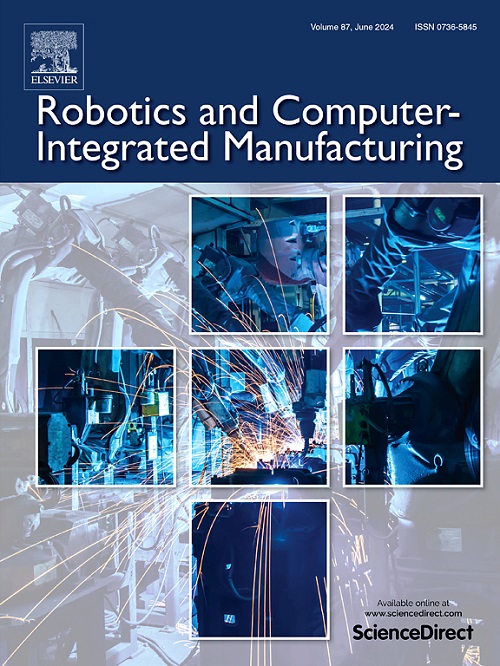Study on dynamics modelling and stiffness strengthening method for mobile industrial robot in-situ milling machining
IF 11.4
1区 计算机科学
Q1 COMPUTER SCIENCE, INTERDISCIPLINARY APPLICATIONS
引用次数: 0
Abstract
Accurate analysis of the dynamic characteristics of a mobile industrial robot (MIR) is essential for evaluating and enhancing its machining performance. In the case of mobile heavy-load milling industrial robots, the significant weight of the end-effector and periodic external excitations highlight the flexibility of joints and links. This flexibility considerably affects the vibration characteristics and milling quality of the system. This work proposes a new multi-rigid-flexible coupling dynamics model for the MIR that employs the multibody systems transfer matrix method. The overall transfer equations and dynamics response equations for the system are derived. This method is distinguished by its high programmability, low system matrix order, and strong versatility. To validate the proposed method, modal experiments and excitation response tests have been designed in this work. Additionally, the influence of joint stiffness, joint angle, and link flexibility on the dynamic characteristics of the MIR is thoroughly analyzed. An evaluation index is developed to enhance the system's stiffness during milling that integrates both static and dynamic characteristics based on the analysis of these influencing factors. Finally, the feasibility and effectiveness of the stiffness enhancement model are verified after performing various milling experiments.
移动工业机器人原位铣削加工动力学建模及刚度强化方法研究
准确分析移动工业机器人的动态特性对评价和提高其加工性能至关重要。在移动重载铣削工业机器人中,末端执行器的显著重量和周期性的外部激励突出了关节和连杆的灵活性。这种灵活性极大地影响了系统的振动特性和铣削质量。本文提出了一种新的多刚柔耦合动力学模型,该模型采用多体系统传递矩阵法。推导了系统的总体传递方程和动力学响应方程。该方法具有可编程性高、系统矩阵阶数低、通用性强等特点。为了验证所提出的方法,本文设计了模态试验和激励响应试验。此外,还深入分析了关节刚度、关节角和连杆柔度对MIR动态特性的影响。在分析这些影响因素的基础上,提出了一种综合静、动态特性的铣削系统刚度评价指标。最后,通过各种铣削实验验证了刚度增强模型的可行性和有效性。
本文章由计算机程序翻译,如有差异,请以英文原文为准。
求助全文
约1分钟内获得全文
求助全文
来源期刊
CiteScore
24.10
自引率
13.50%
发文量
160
审稿时长
50 days
期刊介绍:
The journal, Robotics and Computer-Integrated Manufacturing, focuses on sharing research applications that contribute to the development of new or enhanced robotics, manufacturing technologies, and innovative manufacturing strategies that are relevant to industry. Papers that combine theory and experimental validation are preferred, while review papers on current robotics and manufacturing issues are also considered. However, papers on traditional machining processes, modeling and simulation, supply chain management, and resource optimization are generally not within the scope of the journal, as there are more appropriate journals for these topics. Similarly, papers that are overly theoretical or mathematical will be directed to other suitable journals. The journal welcomes original papers in areas such as industrial robotics, human-robot collaboration in manufacturing, cloud-based manufacturing, cyber-physical production systems, big data analytics in manufacturing, smart mechatronics, machine learning, adaptive and sustainable manufacturing, and other fields involving unique manufacturing technologies.

 求助内容:
求助内容: 应助结果提醒方式:
应助结果提醒方式:


